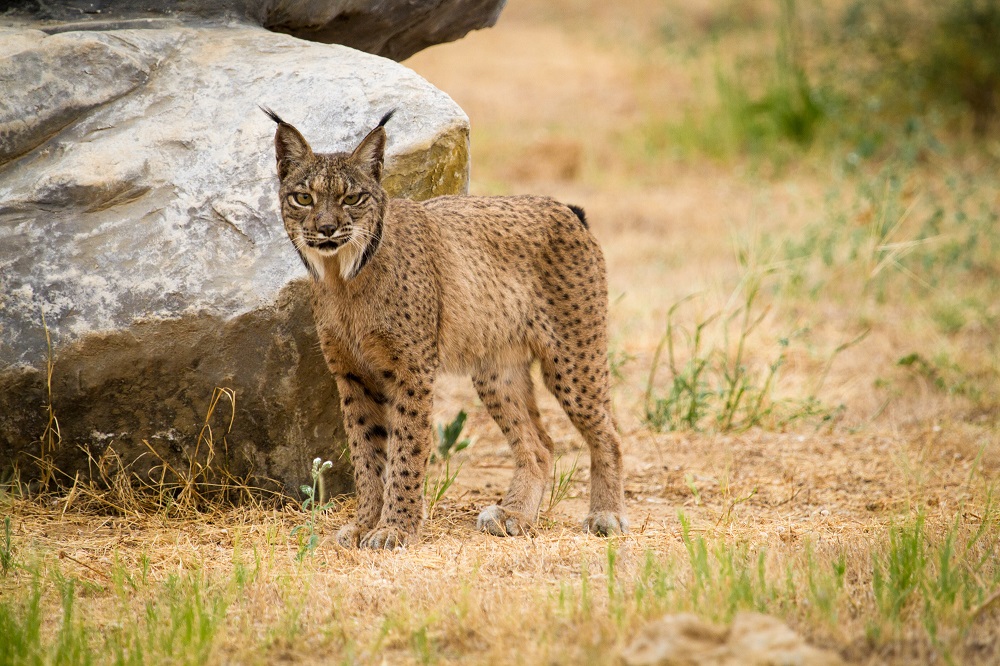A study of the Doñana Biological Station – CSIC determined that 1100 reproductive females, triple the 2022 census, are needed to guarantee the genetic viability of this species
To achieve this goal, at least eight the creation of eight new subpopulations are required, as well as promoting connectivity among them
A study of the Doñana Biological Station, institute belongin to the Spanish National Research Council, has determined that the Iberian lynx population is not yet favorable. In the research work, published in the journal Animal Conservation, questions on which conditions are needed to guarantee genetic viability in the long term have been evaluated. According to the results, this would depend on the increase in the number and size of subpopulations, as well as the improvement of the connectivity among them.
Thanks to several conservation programs, Iberian lynx population has showed a positive trend in the last decade: the last census estimated a total of 1668 individuals in the wild when less than 100 remained in 2002. Currently, in addition to facing numerous threats, such as roadkills, decline of rabbits, habitat fragmentation or global change, there is another aspect posing its recovery at risk: the genetic factor. "The recovery of a species does not only depend on overall numbers, but also on a minimum of genetic variability to ensure its survival. In its most critical moment, there were only two isolated populations of Iberian lynx in Doñana and Andújar", explains José Antonio Godoy, a resercher of the CSIC at the Doñana Biological Station. "At present there are five subpopulations. The project LIFE Lynxconnect is working in new reintroductions in Sierra Arana and Lorca, but this does not seem to be enough yet", he adds.
The results of the study indicated that the long-term genetic viability of Iberian lynx population would need, at least, an increase in the subpopulation size of 50-200%. This would mean reaching at least 1100 reproductive females from the 326 registered in the 2022 census. Another of the conditions would be the creation of eight new subpopulations. There requirements seem challenging to achieve in the short-medium term due to the high costs of creating new subpopulations and the scarcity of suitable areas with enough density of rabbits, its main prey. However, habitats not considered optimal are now being used by the Iberian lynx, opening up new possibilities that must be studied in the future.
Another of the requirements would be related with migration rates. Subpopulations must be connected enough to allow the genetic exchange among them. In this sense, the exchange of between 8 and 15 individual per generation between neighbouring subpopulations are needed. The Iberian lynx released as part of the ongoing reintroduction programme have demonstrated an unanticipated migration capacity.
"Dozens of individuals have travelled distances of even hundreds of kilometres, and in some cases reaching and successfully establishing in other lynx populations. Despite this, new actions will be essential to improve connectivity, which are already planned in the LIFE Lynxconnect project", explains Godoy. This includes the creation of ecological corridors or the establishment of intermediate subpopulations which may function as stepping-stones by attracting dispersing individuals and directing them towards the next subpopulation. It is, however, difficult to foreseen whether these measures are enough to achieve the goal proposed in the study.
This study suggests that, to guarantee long-term genetic viability of the species, it is critical the expansion of existing subpopulations and the creation of new subpopulations in areas showing high growth potential, even though they are more poorly connected. In any case, results show that directing resources to the creating of many small populations, with no prospects of connection, should be avoided.
Referencia:
Carme Pacín, Germán Garrote and José A. Godoy. Evaluation of the Genetic Viability of Metapopulation Scenarios for the Iberian lynx. Animal Conservation. DOI: https://doi.org/10.1111/acv.12890
Contact:
outreach@ebd.csic.es
https://doi.org/10.1111/acv.12890








 ¡Abierta convocatoria para proyectos de investigación en la ICTS- Doñana!
¡Abierta convocatoria para proyectos de investigación en la ICTS- Doñana!


